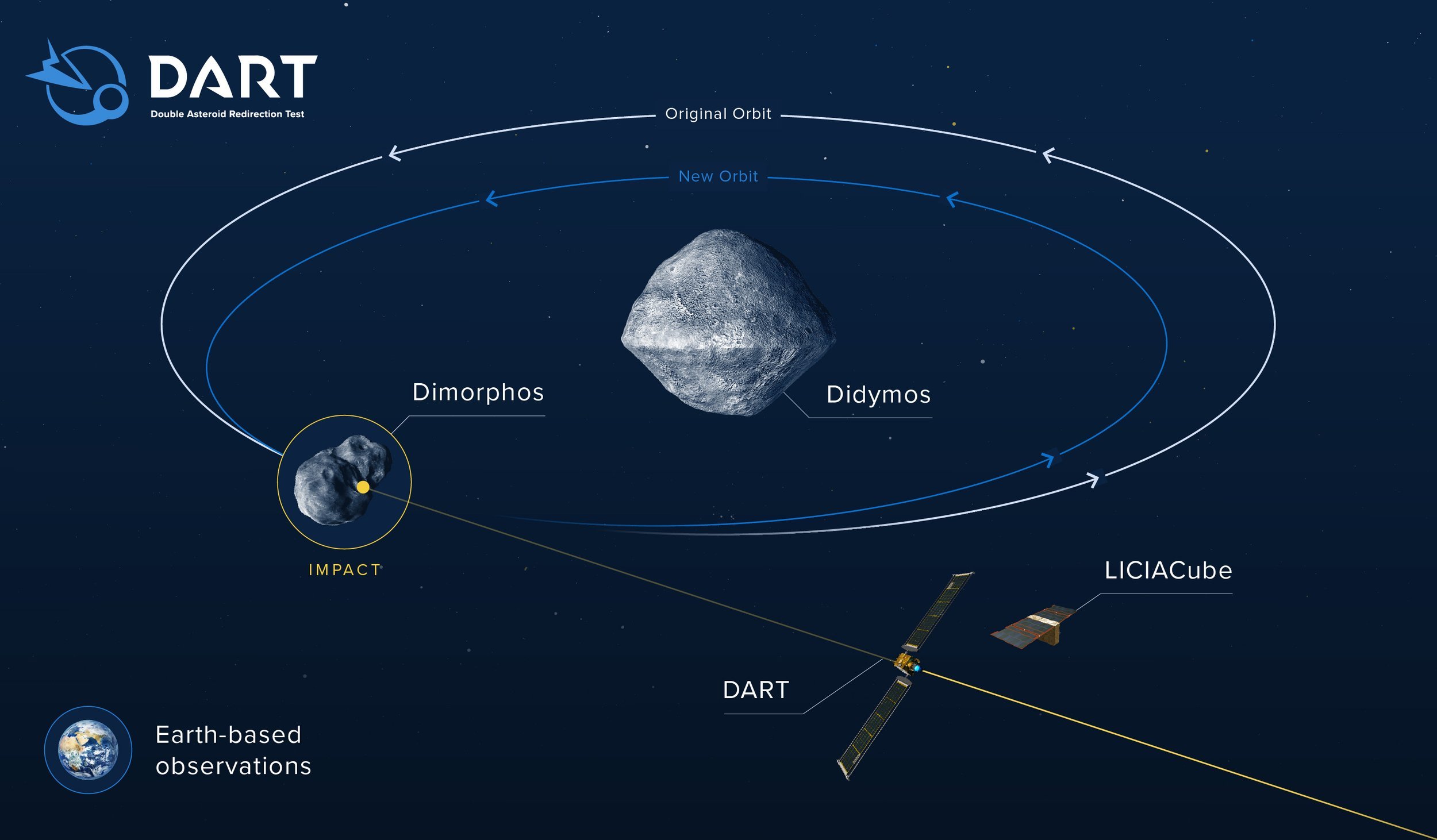At 7:14 PM U.S. Eastern Time tonight, a small American spacecraft will smash itself to pieces against the asteroid Dimorphos to see whether it’s possible to nudge a giant planet-killing space rock off a collision course with Earth.
Before you run to the fallout shelter, Dimorphos will never pose a threat to the Earth, but there are potentially thousands of asteroids that could, and at the moment, the Double-Asteroid Redirection Test, or DART from NASA, is the only ongoing project to see if we could save ourselves from such an event.
As WaL reported last year, there are currently no asteroids on an Earth-threatening path that have been identified, but on the other hand it’s well-known our planet has been hit in the past.
For starters, there is the asteroid that impacted the Yucatan 66 million years ago and took out the dinosaurs. In our epoch, the Tunguska meteor airburst in 1908 exploded above remote Siberia with a force of 12 megatons, leveling 80 million trees across 830 square miles, and the 2013 Chelyabinsk meteor explosion which injured 1,500 people and damaged over 7,000 structures after it burnt up in the atmosphere with a force of 26 Hiroshima bombs, have elevated the concept of planetary defense to something worth investing millions in.
DART is the first mission resulting from those millions, and is the first-ever from the recently established Planetary Defense Coordination Office at NASA.
The target for the DART demonstration is a harmless asteroid called Didymos, which has a satellite asteroid about one-fifth its size orbiting it every 11 hours or so called Dimorphos. DART, will slam into Dimorphos head-on, attempting to alter the orbit of the larger Didymos as a result of gravity by a small degree.
And thanks to NASA’s love of introducing the world to space, that impact will be broadcast live on NASA TV, which can be found through their live YouTube screen or on their website. The feed can also be found here.
While we won’t actually get to see the impact, we will be able to see the immediate aftermath in photos, and hopefully receive some data as to whether the asteroid was successfully nudged off its current orbit.
One small snap for man
One of the reasons we will be able to see DART’s heroic sacrifice is because of the Italian space agency’s (ASI) contribution to the mission—a small pair of eyes called LICIACube.
Having been released some days ago from the main body of the DART spacecraft, it will make a flyby of Dimorphos about 3 minutes after impact to take images of the debris broken away from the asteroid, as well as detailed pictures of the asteroids themselves.
It marks a notable triumph for the Italians, who punch a little above their weight when it comes to astrophysics and astronautics. LICIACube is the first purely Italian autonomous spacecraft in deep space.
The well-studied explosion will hopefully reveal whether or not you can run a spacecraft into an asteroid or asteroid system and blow it off a potentially disastrous collision course with the Earth.
It seems a lot of time, money, and effort to build a vessel for the sole purpose of destroying it, but compared to research and development budgets for weapons manufacturers to fight wars more effectively against our fellow man, a few million to know whether we could save ourselves from a meteoric apocalypse seems well worth the pennies. WaL
If you think the stories you’ve just read were worth a few dollars, consider donating here to our modest $500-a-year administration costs.
Continue exploring this topic — Asteroids — To Nudge an Asteroid NASA to Rely Not on a Missile But a DART
Continue exploring this topic — Telescopes — More Space Telescopes: Nancy Grace Roman to Search For Dark Matter and Exoplanets in 2027
Continue exploring this topic — NASA — Perseverance Rover Spots Balancing Rocks and Natural Snake-Headed Sculpture



